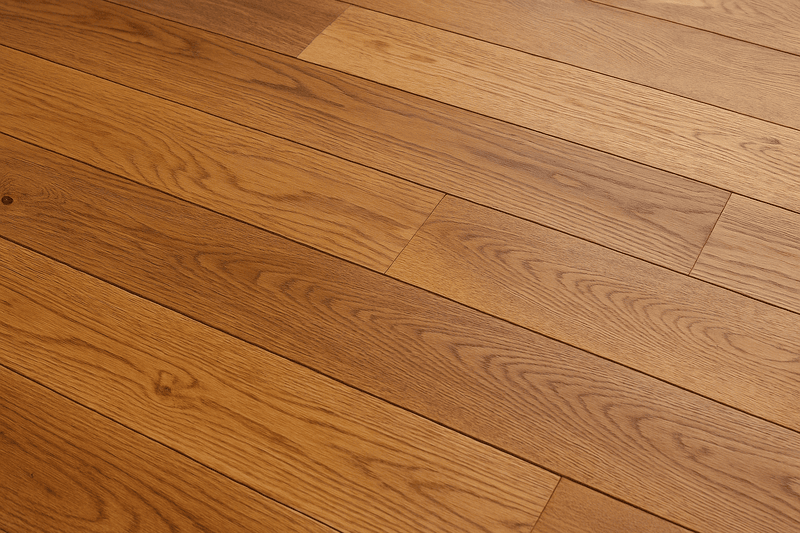What Is Engineered Timber Flooring? Everything You Need to Know Before Buying

When planning a flooring upgrade, homeowners often weigh durability, style, and cost. Timber has always been a sought-after option for its warmth and timeless charm, yet solid hardwood can sometimes feel out of reach. This is where engineered timber flooring steps in, offering the beauty of wood with added stability and affordability. If you’ve ever wondered, What is engineered timber flooring? Everything you need to know before buying is explored right here.
Understanding Engineered Timber Flooring
Unlike traditional solid wood planks cut from a single piece of timber, engineered timber flooring is constructed with multiple layers. The top, known as the wear layer, is real hardwood, which provides the authentic look and feel of natural timber. Beneath it lies a core made from layers of plywood or high-density fibreboard, designed for strength and resistance to changes in temperature and humidity.
This layered structure is what makes engineered timber more versatile. It can be installed in areas where solid hardwood might struggle, such as apartments or regions with fluctuating climates. For a deeper breakdown, the guide on engineered timber flooring explained offers further clarity on how this type of flooring is built.
Why Engineered Timber Flooring Appeals to Modern Homeowners
The growing popularity of engineered timber comes down to a mix of practical and aesthetic advantages. It looks almost identical to solid wood, giving interiors the same natural elegance. Yet its stability means it is less prone to warping, which is particularly important in Australia’s varied climates.
Engineered flooring can also be more budget-friendly. Since only the top layer is hardwood, it uses timber more efficiently, reducing costs while still delivering a luxurious finish. Additionally, the wide variety of finishes, stains, and board widths available makes it easier to match different styles, from rustic and traditional to sleek and contemporary.
Comparing Engineered Timber with Solid Hardwood
For many buyers, the key question is how engineered timber stacks up against solid hardwood. Solid wood floors can be sanded and refinished multiple times, often lasting decades if maintained properly. Engineered boards, depending on the thickness of the wear layer, may only be sanded a limited number of times.
However, engineered flooring is often easier to install, thanks to click-lock or tongue-and-groove systems, which makes it attractive to those seeking a straightforward renovation. It also adapts better to modern living spaces such as apartments where subfloors, underlays, and height restrictions make solid hardwood less practical.
In essence, while solid timber remains the traditional choice, engineered timber combines beauty and convenience in a way that appeals to many modern homeowners.
Installation Options and Practical Considerations
One of the main strengths of engineered timber flooring is flexibility in installation. It can be glued down, nailed, or floated depending on the project. Floating floors, in particular, are popular for DIY enthusiasts because they can be laid directly over existing subfloors with minimal preparation.
It’s important, however, to consider the environment. High-moisture spaces such as bathrooms or laundries may not be suitable for timber flooring of any kind. In living rooms, bedrooms, and hallways, engineered boards are ideal, offering resilience under everyday use.
Regular maintenance, including sweeping and occasional mopping with timber-safe products, keeps engineered timber looking its best. Using rugs and furniture pads also helps protect the surface from scratches and dents.
Cost and Long-Term Value
While engineered timber is generally more affordable than solid hardwood, pricing can vary depending on the thickness of the wear layer, the type of hardwood used on top, and the quality of the core layers. Thicker wear layers cost more but allow for refinishing, which increases longevity.
Homeowners considering resale value should note that engineered timber is widely recognised by buyers and agents alike as a premium flooring option. A well-installed and maintained floor may enhance a property’s appeal, boosting overall market value.
For those curious about balancing cost and lifestyle choices, articles such as budget-friendly home upgrades provide additional insights into how flooring decisions influence long-term satisfaction and property worth.
Sustainability and Environmental Considerations
As more buyers seek eco-friendly solutions, engineered timber flooring stands out for its efficient use of resources. Because it uses less hardwood overall, it reduces demand on forests while still delivering the beauty of natural timber. Many manufacturers also source timber from responsibly managed forests, giving homeowners a more sustainable option.
Additionally, engineered timber often pairs well with underfloor heating systems, something that solid hardwood typically struggles with. This compatibility adds to its energy efficiency and comfort, particularly in cooler climates.
For broader discussions about sustainable living and home design, guides like eco-conscious interior choices are worth exploring.
Choosing the Right Style and Finish
Engineered timber flooring comes in a wide variety of finishes. From light oaks that brighten interiors to rich walnuts that add depth, the design options are almost endless. Matte finishes create a more contemporary feel, while glossy coatings emphasise traditional elegance.
Board size also influences the final look. Wider planks create a sense of spaciousness, while narrower boards work well in heritage-style homes or smaller rooms. Considering lifestyle factors—such as whether the home has pets, young children, or heavy foot traffic—helps determine the most practical choice of finish and durability.
Final Thoughts
So, what is engineered timber flooring? Everything you need to know before buying comes down to balancing appearance, practicality, and budget. With its combination of natural beauty and structural stability, it has become a favourite among homeowners looking for reliable, stylish, and sustainable flooring.
By understanding the construction, comparing it with solid timber, and considering lifestyle needs, buyers can make an informed decision. For anyone still unsure, seeking expert advice and resources such as engineered timber flooring explained ensures confidence before committing to the right choice.






